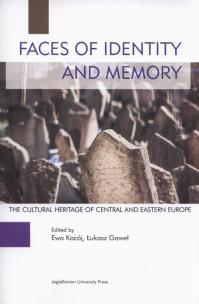- Regulamin
- Koszty dostawy
- Kontakt
- Dziś w ofercie 237 575 produktów
KSIĄŻKI
- Albumy
- Beletrystyka
- Biografie
- Dla dzieci i młodzieży
- Edukacja
- Ekonomia i biznes
- Ezoteryka
- Historia
- Informatyka
- Kalendarze
- Komiksy
- Kryminał i sensacja
- Kultura i sztuka
- Literatura faktu
- Literatura kobieca
- Literatura piękna
- Medycyna
- Nauka języków obcych
- Nauki humanistyczne
- Nauki przyrodnicze
- Nauki ścisłe
- Podręczniki
- Poradniki
- Prawo i administracja
- Przewodniki i podróże
- Psychologia
- Religia
- Sport
- Technika
- Zdrowie i uroda
ZABAWKI
- Artykuły dla niemowląt
- Bączki
- Bujaki i skoczki
- Ciągnij / pchaj
- Dla niemowlaka
- Grzechotki i gryzaki
- Karuzele i pozytywki
- Maty i centra zabaw
- Projektory i lampki
- Sortery i piramidki
- Zabawki
- Edukacyjne i kreatywne
- Figurki
- Klocki
- Lalki
- Pojazdy
- Pluszaki i maskotki
- Sport i rekreacja
- Zabawa w dom
- Zabawki drewniane
- Puzzle
- Do 200 elementów
- 201-500 elementów
- 501-1000 elementów
- Ponad 1000 elementów
- Puzzle 3D
ART. PAP
- Artykuły biurowe
- Artykuły piśmiennicze
- Bloczki i kartki samoprzylepne
- Dziurkacze
- Kalkulatory
- Nożyczki i nożyki
- Skoroszyty
- Teczki
- Wizytowniki
- Zszywacze
- Artykuły szkolne
- Akcesoria szkolne
- Modelowanie
- Notatniki i zeszyty
- Piórniki
- Plecaki i torby
- Pojemniki na śniadanie
- Pomoce naukowe
- Przybory matematyczne
- Przybory rysunkowe
- Upominki i gadżety
- Akcesoria do książek
- Artykuły balowe
- Breloki i zawieszki
- Drobiazgi, różności
- Kubki
- Oferta Świąteczna
- Papeteria, kartki i naklejki
- Skarpetki Many Mornings
- Upominki
GRY
MULTIMEDIA
- Audiobooki
- Beletrystyka
- Biografie i wspomnienia
- Dla dzieci i młodzieży
- Fantastyka
- Filozofia i religia
- Historia
- Literatura faktu i reportaż
- Poradniki
- Sensacja i kryminał
- Filmy DVD/BD
- Animowane
- Biograficzne
- Fantasy
- Horrory
- Komedie
- Romanse
- Science Fiction
- Sensacyjne / kino akcji
- Thrillery
- Muzyka CD
- Alternatywna
- Blues
- Dla dzieci
- Jazz
- Klasyczna
- Piosenka aktorska i poetycka
- Pop
- Rock
- Świąteczna i kolędy
- Akcesoria GSM
- Głośniki
- Kable i adaptery
- Klawiatury
- Myszy
- Słuchawki
PROMOCJE
ZDROWIE
LEGO

Faces of identity and memory
ISBN:
9788323339540
EAN:
9788323339540
oprawa:
Miękka ze skrzydełkami
podtytuł:
The Cultural Heritage of Central and Eastern Europe
format:
16.0x23.0cm
język:
angielski
liczba stron:
224
rok wydania:
2015
(0) Sprawdź recenzje
Opis produktu
Zasady bezpieczeństwa
Cultural Heritage of Central and Eastern Europe is still little known, but is increasingly being exposed as an area for scientific research. This region of Europe has experienced exceptional historical events in the twentieth century. Along the majority societies associated with different states, there lived communities of the minority and stateless, torn by totalitarian regimes of the previous century. The politics of assimilation aimed at the national, ethnic, and religious minorities has taken an enormous toll on their cultural heritage. The empty, devastated Jewish synagogues, Orthodox, Greek and Roman Catholic churches serving as warehouses are still to be seen on these lands. We encounter fallen mansions or houses abandoned in a hurry of those who once lived their life in a colourful multicultural reality of the borderland. The fall of communism in this part of Europe has restored the memory of the “absent” and triggered activities to rescue their tangible and intangible cultural heritage. In Central-Eastern Europe, the passing decades have been characterized by many interesting and new projects created within the framework of the forgotten and uncomfortable heritage, undertaken by many public, self-government, private and non-profit institutions They are supported by the organizers and implementers of culture, as well as regional activists and enthusiasts who realize there will be a big void in the history and collective memory of this region if the minorities’ heritage is to disappear. The monograph includes papers from international researchers tackling various issues on cultural heritage and its management. They present multiple involvements of this area of culture within different European countries’ politics or ideology.
Ewa Kocój, Introduction
CENA:
31,75
zł
Cena detaliczna:
39,90 zł
20%
rabatu
Najniższa cena z ostatnich 30 dni: 31,75 zł
Produkt niedostępny
Uwaga!!!
Ten produkt jest zapowiedzią. Realizacja Twojego zamówienia ulegnie przez to wydłużeniu do czasu premiery tej pozycji. Czy chcesz dodać ten produkt do koszyka?


Wybierz wariant produktu
